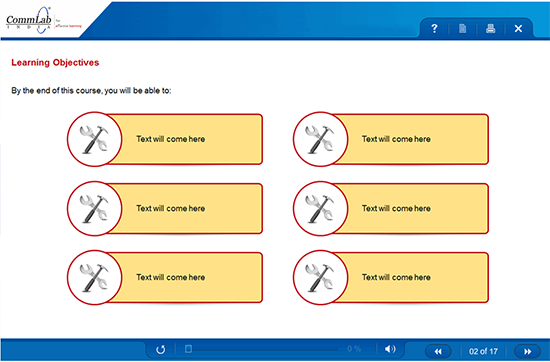3 Tips to Develop Effective Curriculum-based E-learning

Curriculum-based courses are very much in demand today. Organizations prefer curriculum-based courses to stand-alone courses. Curriculum courses cater to a long running training program that usually runs for a period of two to three months. It is a course that has several modules which instruct on a particular subject in-depth. From the learner’s perspective, these modules would be easy to grasp and understand. They can be bite-sized modules that are easily accessible by the learners, anywhere, anytime, as per their convenience. Since all the modules of a curriculum are inter-related to each other, it is a tough task to develop such modules effectively.
→ Download Now: Instructional Design 101
Here are three tips that can help you develop e-learning curriculums effectively.
1. Use a Global Strategy for Common Slides
There are a certain slides that are used in all modules. Such modules could be taught in the same way. For example, every module starts with the introduction of that module, then explains the learning objectives, and ends up with a summary. When analyzing the inputs, it is essential to make out all slides that are used in all modules. We can also create scenarios or case studies for each module, according to the content of that module. Then, it is time to think of a global strategy of how these slides look in the course. Each time you develop a new module, you can simply reuse the same slide and replace its content with the text of your module.

2. Maintain Consistency throughout the Modules
More than one person is involved in developing the modules. So, it is essential to maintain consistency in terms of design, duration and assessments throughout the modules as they belong to a single course. Right from the colors you are using to the images placed in the modules, you need to ensure consistency. For example, if you are planning to use vector images in the modules, you need to use vector images throughout the course. This helps retain the look and feel of the course till the end.
3. Follow an Agile Process
Since a set of modules are being developed in the same way, it is advisable to follow an agile process for a successful outcome. Send a prototype for a set of slides that are common to all modules and get them approved by the client. This helps us understand whether we are in ‘sync’ with the client’s requirement or not. Once the prototype is approved, the modules can be developed quickly.
These three tips help you develop effective curriculum-based courses. I hope you find this blog informative. Please do share your ideas on this.



![4 Challenges of End-To-End E-learning Development [Infographic]](https://blog.commlabindia.com/hubfs/Imported_Blog_Media/end-to-end-elearning-development-challenges-infographic1.jpg)

